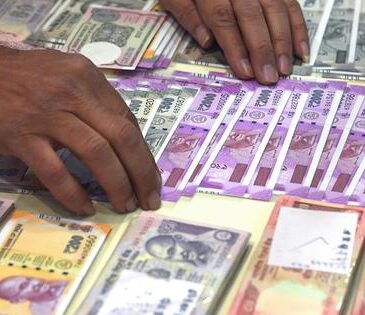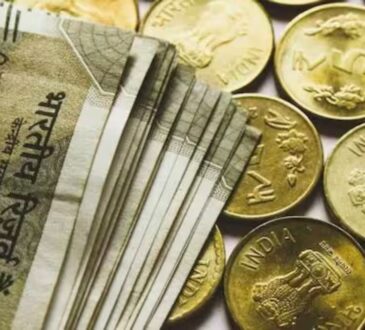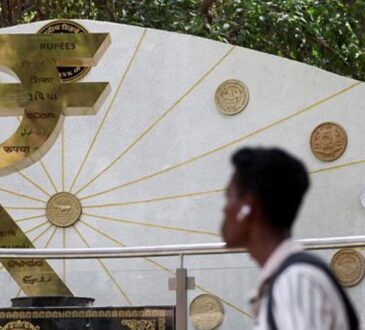Paraphrasing Abraham Lincoln, Union Finance Minister Nirmala Sitharaman on Sunday (February 2, 2025) described the Union Budget as “by the people, for the people, of the people”, and said Prime Minister Narendra Modi was fully behind the idea to cut taxes for middle class but it took time to convince the bureaucrats.
“We have heard the voice of the middle class” who had been complaining about their aspirations not being met despite being honest taxpayers, she told PTI in an interview.
With the honest and proud taxpayers wanting the government to do more to limit the impact of factors like inflation, the Prime Minister was quick to task Sitharaman to look at ways to give relief.
While Mr. Modi was quick to agree to tax relief, it took a bit of convincing to get on board the officials in the finance ministry and the Central Board of Direct Taxes (CBDT) — who are tasked to ensure revenue collection to meet welfare and other schemes, she said.
Presenting her eighth straight budget, Ms. Sitharaman on Saturday announced an increase in the personal income tax threshold below which taxpayers owe no tax to ₹12 lakh, up from ₹7 lakh, as well as a regij in tax brackets that would help those earning higher than that save up to ₹1.1 lakh.
The ₹5 lakh hike in exemption limit is the biggest-ever and equals all the reliefs that were given between 2005 and 2023.
“I think the prime minister put it succinctly, he said it’s the people’s Budget, it is the Budget which the people wanted.” Asked to describe the ethos of the budget in her own words, she said, “as they say in democracy in Abraham Lincoln’s words, it is Budget by the people, of the people for the people.” Ms. Sitharaman said the new rates would “substantially reduce the taxes of the middle class and leave more money in their hands, boosting household consumption, savings and investment”.
Explaining the thought that went behind the big announcement, Sitharaman said the tax cuts were in the works for sometime.
One of the ideas was to make the direct tax simpler and easier to comply with. Work on this started in the July 2024 Budget and now a new law is on the anvil, which will simplify the language, reduce compliance burden and be a bit more user-friendly.
“It wasn’t talking about rate restructuring, although for several years now, we have been looking at ways in which the rates can be a lot more reasonably taxpayer friendly. And therefore that work was also going on,” she said. “Equally, after the July budget, there was this voice of the middle class, which felt that they were paying tax… but also felt they don’t seem to have much in the way of redressing their problems.” There was also this feeling that the government was very inclusive in taking care of the very poor and the vulnerable sections.
“So the voice which came wherever I travelled was we are proud taxpayers. We are honest taxpayers. We want to continue to serve the country by being good taxpayers. But what do you think about what kind of things you can do for us?,” she said. “And so I had this discussion also with the prime minister who put me on the specific assignment to see what is it that you can come up with.” Numbers were worked and presented to the prime minister who gave guidance for what was presented in the FY26 Budget on Saturday, she said.
Asked how much persuasion did it take to get the prime minister on board, Sitharaman said, “No, I think your question should be, how much did it take for me to convince the ministry (and) the board (CBDT).” “So, it is not so much the PM, the PM was very clear that he wants to do something. It is for the ministry to have had the comfort level and then go with the proposal,” she said. “So, the more work that was needed, was needed for convincing the Board that efficiency in collection and honest taxpayers’ voice” needs to be heard.
The ministry and CBDT needed convincing because they have to be sure of revenue generation. “So, they were not wrong in reminding me periodically, saying what would it mean? But ultimately, everybody came around,” she added.
The Finance Minister said the prime minister meets and listens to the voice of people from different sectors and industry leaders and responds to their needs.
“I’m very happy to be a part of this government, which literally hears the voice and responds,” she said.
Stating that an attempt has always been to widen the tax net, Sitharaman said efforts are to get more Indians, who are in a position to pay, come on board and pay.
“That attempt of widening the tax net is a continuous, ongoing exercise,” she said.
India currently has about 8.65 crore income tax return filer. The number swells to over 10 crore after people with TDS liability but not filing returns are included.
“I think many people who are just outside of the fringe should be nudged to come in who have never been taxpayers or who have now reached that level of income, or even those who have avoided tax, will all have to be brought on,” she said. “So, that is certainly a task before us. We have to make sure that people are understanding the role of paying tax and bring them on board.” Ms. Sitharaman defended the modest increase in capital spending at ₹11.21 lakh crore in the next financial year starting April compared to a lowered ₹10.18 lakh crore in current fiscal, saying the quality of spending has also to be seen.
“If we are looking at the numbers, because we’ve got used to 16%, 17% increase (in capital spending) every year from 2020, and saying you have not increased it by that number (in the Budget for 2025-26), I would equally want to ask you to please look at the way in which the quality of spending has happened, particularly capital expenditure,” she said.
She was also appreciative of the states which received the 50-year interest-free share of the money which went from the central government’s side as capital expenditure for them.
“They have also shown very great interest in capital expenditure and the quality of expenditure, therefore has been very good. At the same time, last year we touched Rs 11.11 lakh crore and this year building on it, it is about Rs 10.1 lakh crore over the revised estimate (RE) which is far more realistic,” she said.
The spending in the 2024-25 fiscal was lower than the budgeted Rs 11.11 lakh crore as four months were lost when the general elections were being held in the country.
“But during that year, the election year, which we’ve just completed, the capital expenditure did go a bit slow. Otherwise my RE would have also been closer to the budget estimate (BE) number again,” she added.
Rupee not depreciating against any currency other than USD
Ms. Sitharaman rejected criticism over the slide of the Indian rupee, saying it has depreciated only against a strengthening U.S. dollar but remained stable against all other currencies because of the strong macroeconomic fundamentals.
In an interview with PTI, she said a 3% depreciation in the rupee against the U.S. dollar in past few months is a matter of concern as it makes imports costlier, but she rejected criticism that the local currency has seen all-round weakness.
“I am concerned but I will not accept the criticism that ‘Oh Rupee is weakening!’ Our macroeconomic fundamentals are strong. Rupee wouldn’t be stable against all the currencies if the fundamentals were weak,” she said.
The Indian rupee has been under pressure in the last few months but it continues to be the least volatile currency against the U.S. dollar among its Asian and global peers. The reasons for the rupee hitting record lows almost on a daily basis against the U.S. dollar range from widening trade deficit to a surge in the dollar index after the US Federal Reserve hinted at fewer rate cuts in 2025.
The Reserve Bank has reportedly spent $77 billion from its foreign exchange reserves to defend the rupee from falling sharply in the spot market, taking India’s foreign exchange reserves down to $629.557 billion as on January 30, 2024, from $701.176 billion on October 4, 2024.

“Rupee’s volatility is against the dollar. Rupee has behaved in a far more stable fashion than any other currency,” Ms. Sitharaman said.
Rupee volatility is noticeable as the dollar is strengthening.
“RBI also has been looking at ways in which it will interfere in the market only to stabilise the need for avoiding huge volatility based reasons. So we are all closely watching the situation,” she said.
She termed critics pointing to rupee volatility and depreciation as “a very quick argument”.
“But in today’s dollar strengthening environment and in the new US administration, the rupee will have to be understood in its relationship with the dollar (and) the fluctuations which come as a result of that. Criticisms can come, but those criticisms will also have to go with a response with a bit more study,” she added.
India’s unblemished track record of fiscal consolidation to Moody’s not changing ratings
Union Finance Minister Nirmala Sitharaman flaunted India’s unblemished track record of not faltering on any of its fiscal consolidation or debt reduction targets as she seemed to shrug off the passiveness of agencies like Moody’s which have not upgraded India’s ratings.
Ms. Sitharaman in her Budget for fiscal year beginning April treaded a fine line between fiscal prudence and providing a thrust to growth as she not only gave the middle class the biggest-ever tax relief but also unveiled a glide path for reducing fiscal deficit next year and debt as percentage of GDP by 2031.
India, she said, had to borrow more during the pandemic to meet the fiscal needs of the economy amid global challenges, supply chain disruptions and geopolitical conflicts in two theatres.
“Despite all these we have shown a commitment and following the commitment to the last word as regards fiscal deficit and the glide path that we should follow,” she told PTI in an interview. “We have, not one year have we failed (to meet our commitment)“.
Moody’s Ratings on Saturday (February 1, 2025) ruled out an immediate upgrade of India’s sovereign rating despite the government’s efforts to manage its finances prudently.
“While we view the government’s sustained fiscal discipline and narrower fiscal deficits as credit positive, we don’t expect these improvements in the debt burden or ‘debt affordability’ to be enough to trigger a sovereign rating upgrade at this time,” Christian de Guzman, Senior Vice President, Moody’s Ratings, had told PTI.
Moody’s currently maintains India’s sovereign rating at “Baa3” with a stable outlook, which is the lowest investment-grade rating.
While India is making strides toward fiscal discipline and inflation control, Moody’s maintains that for a rating upgrade, a substantial reduction in the debt burden and more significant revenue-generating measures are essential. Despite recent improvements, the fiscal deficit and debt-to-GDP ratio remain wider than pre-pandemic levels, with debt servicing costs continuing to take up the largest portion of the budget, even surpassing infrastructure spending, it believed.
A ratings upgrade indicates a reduced perceived risk of defaulting on its debt, which usually leads to lower borrowing costs and increased investor confidence in the country’s economy.
In her eighth budget presented on Saturday (February 1, 2025), the Finance Minister told Parliament that the fiscal deficit for the current year will be at 4.8 per cent of the GDP as had been promised last year, and that it will be brought down to 4.4 per cent in the 2025-26 financial year.
“Equally to give a long term perspective, we have said that we will manage our debt in such a way that the debt-to-GDP ratio will be continuously” reduced as outlined in an expert committee report, she said, adding debt will be brought down.
The government has volunteered to say that it will manage the debt. “From last year itself we said that we will manage our debt from now so that it comes down to the level recommended by that committee,” she said.
The steps taken by the government under Prime Minister Narendra Modi are ones that many of the advanced economies are not doing.
“I’m not comparing my size with any advanced country. But in terms of the principle, cutting down debt to GDP, maintaining fiscal deficit — these are relentlessly being followed without any negative impact on social welfare schemes, education or health,” she said.
Ms. Sitharaman went on to state that while sticking to the fiscal consolidation path, there has been no compromise on the public expenditure which is necessary to trigger growth.
“The capital expenditure has not come down. We follow the two cardinal principles to keep your fiscal deficit (under check) and also to borrow only for meaningful capital expenditure,” she added.
Sitharaman defended the modest increase in capital spending at Rs 11.21 lakh crore in the next financial year starting April compared to a lowered Rs 10.18 lakh crore in current fiscal, saying the quality of spending is also to be seen.
“If we are looking at the numbers, because we’ve got used to 16 per cent, 17 per cent increase (in capital spending) every year from 2020, and saying you have not increased it by that number (in the Budget for 2025-26), I would equally want to ask you to please look at the way in which the quality of spending has happened, particularly capital expenditure,” she said.
She was also appreciative of the states which received the 50-year interest-free share of the money which went from the Central government’s side as capital expenditure for them.
“They have also shown very great interest in capital expenditure and the quality of expenditure, therefore has been very good. At the same time, last year we touched Rs 11.11 lakh crore and this year building on it, it is about Rs 10.1 lakh crore over the revised estimate (RE) which is far more realistic,” she said.
The spending in the 2024-25 fiscal was lower than the budgeted ₹11.11 lakh crore as four months were lost when the general elections were being held in the country.
“But during that year, the election year, which we’ve just completed, the capital expenditure did go a bit slow. Otherwise my RE would have also been closer to the budget estimate (BE) number again,” she added.
Published – February 02, 2025 02:32 pm IST




